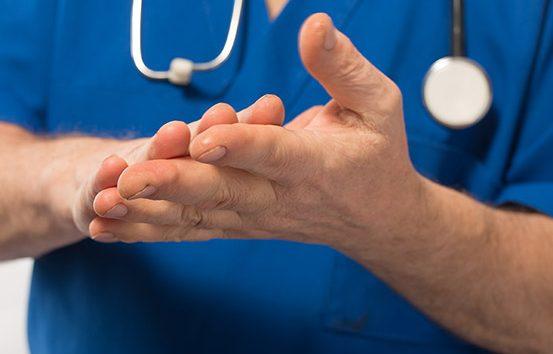Infection control in the home
Germs are all around us. But don’t panic, most of them are completely harmless. Some even do us good, like the bacteria in our gut that aid digestion. The important thing is to protect our families from the germs that can cause bacterial diseases and other infections.
How do germs spread?
Harmful bacteria and other germs can be carried into the home in or on people and pets, or in contaminated food and water.
How they spread is partly down to us. Cleaning contaminated surfaces without proper hygiene (such as a cloth that isn’t cleaned regularly) can quickly spread these germs to other areas. Without knowing it, we can also pick up germs on our hands as we go about our day. They can then be spread to anything we touch until the next time we wash our hands.
Likewise, if a person has a viral illness like the flu, tiny droplets on moisture from their mouth can carry germs into the air when they cough, sneeze or even just breathe. These can contaminate any surface that they land on, or infect other people by being breathed in.
This is what we call the chain of infection, harmful bacteria and other germs being accidentally passed from one person to the next and causing infection. Thankfully, the chain can be broken.
Breaking the chain of infection
The best way to stop the spread of germs is through good hygiene. Here are some ways to help:
- Wash your hands regularly – especially before eating, before and after preparing food, and after coughing, sneezing or using the toilet or changing a nappy
- Cover your nose and mouth with a tissue when you cough or sneeze. Put any used tissues straight in the bin and wash your hands.
- Handle and prepare food safely. Clean your hands and surfaces regularly, separate raw and cooked foods, cook food thoroughly and chill fresh and cooked food to slow the growth of bacteria
- Vaccinations (or immunisations) are a great way to protect from serious infection. Make sure you family is up to date with their vaccinations recommended by your health care professional
- Clean and disinfect surfaces regularly – especially food contact surfaces and regularly touch surfaces such as taps, door handles and telephone keyboards
Clean or disinfect: What’s the difference?
Cleaning means removing dirt and some germs, usually with a detergent and a thorough rinse with hot running water. For many small items (such a cutlery and crockery), this is enough to make them safe to use.
Disinfecting means killing most of the germs present. This is important for larger or fixed surfaces where thorough rinsing isn’t possible (such as work tops, toilets, sinks and telephone handsets). Regularly disinfecting the surfaces of your home is one the best ways to prevent the spread of harmful germs and bacteria. Remember, even in a clean home harmful bacteria can still find their way in.
We can all play a major role in stopping the spread of infections to our family and friends.
Preventing disease and infection control
Hand hygiene is the single most important factor in reducing the spread of infections. It it important that hand hygiene is performed at the right moment. When we are fit and healthy we can usually defend ourselves against many germs. Having healthy skin that is not damaged is one of the main ways we can do this.
Often our natural defences are weakened when we are not well or after an operation.
Hand hygiene can be performed by either washing with soap and water or using a waterless alcohol based hand rub.
Don’t hesitate to ask your doctor or health care provider for more information


